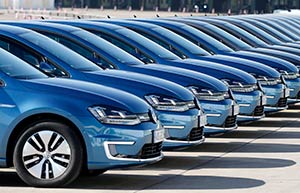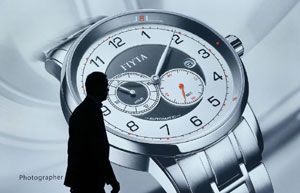Big challenges and opportunities
By Ricky Sun (China Daily) Updated: 2014-02-24 07:34They want to utilize such eye-catching marketing strategies in the Chinese market, while hoping people forget about the brands' approachable and amiable images in their local markets. However, the strategy failed when competing with real high-end brands such as Hermes and Chanel.
The second difficulty is more fierce competition from domestic fashion brands.
International fashion brands such as Zara, H&M and Gap have flooded the Chinese market in recent years, but domestic fashion brands are used to the competition. They have learned how to optimize their business models and are now taking advantage of their localization to narrow the gap with international fashion brands.
|
 |
Me&City, as the representative for domestic fashion brands, recently cooperated with top international fashion trend forecasting agencies and renowned international fashion designers, keeping a close eye on international fashion week. Their Chinese and foreign designers have combined local and foreign elements of the brand and personally set foot in global fashion capitals to conduct related marketing research.
While some international fashion brands have achieved great success in the Chinese market, domestic fashion companies realize that they should not blindly impersonate them. It is essential for domestic companies to have a stable presence in the local market and efficiently integrate into the industry chain, toward international standards on technical aspects such as product design, supply chain and a marketing strategy based on the actual situation in China.
The third difficulty is whether product quality can stand long-term racket.
In 2013, the results of the Comparison Test of Apparel & Fashion conducted by the China Consumers' Association attracted widespread attention. Several famous international brands such as Zara, M&S, Guess and Paul Frank were tested. More than one-third of the sample products did not meet national quality standards.
The authority conducted special tests for product identification, component content, formaldehyde content, PH value, color fastness, peculiar smell, biodegradable aromatic amines fuel, pilling and tear strength. It turned out that fabric is still the Achilles heel of international fashion brands, which is closely related to global sourcing and production.
|
 |
 |
- NHTSA says finds no 'defect trend' in Tesla Model S sedans
- WTO rare earth ruling is unfair
- Amway says 2014 China sales may grow 8%
- President Xi in Europe: Forging deals, boosting business
- CNOOC releases 2013 sustainability report
- Local production by Chery Jaguar Land Rover this year
- Car lovers test their need for speed in BMW Mission 3
- China stocks close mixed Monday


















